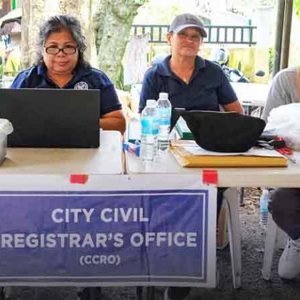
Dear PAO,
May I know what the Copyright Law protects? Does it include the protection of a solution or the unlocking of a mathematical formula?
Darlene
Dear Darlene,
To answer your queries, please allow me to lead your attention to our pertinent laws and jurisprudence. Succinctly, in FILSCAP v. Anrey Inc. (GR 233918, Aug. 9, 2022) penned by Associate Justice Rodil Zalameda, the Supreme Court said that:
“Our copyright law affords protection to original and intellectual creations in the literary and artistic domain from the moment of their creation.” (Emphasis and Underscoring Supplied)
The foregoing finds basis in Section 172.1 of Republic Act 8293, otherwise known as the Intellectual Property Code of the Philippines (“I.P. Code”), viz.:
“Section 172. Literary and Artistic Works. – 172.1. Literary and artistic works, hereinafter referred to as “works”, are original intellectual creations in the literary and artistic domain protected from the moment of their creation x x x.” (Emphasis and Underscoring Supplied)
Essentially, copyright affords protection to original and intellectual creations in the literary and artistic domain from the moment of their creation. Stated otherwise, it refers to the plethora of rights enjoyed by the owner of an artistic or literary work.
Be that as it may, Section 175 of the I.P. Code dictates that no protection shall be given to a mere idea, procedure, system, method or operation, concept, principle, discovery or data as such. For brevity, the provision of our law reads that:
“Section 175. Unprotected Subject Matter. – Notwithstanding the provisions of Sections 172 and 173, no protection shall extend, under this law, to any idea, procedure, system, method or operation, concept, principle, discovery or mere data as such, even if they are expressed, explained, illustrated or embodied in a work; news of the day and other miscellaneous facts having the character of mere items of press information; or any official text of a legislative, administrative or legal nature, as well as any official translation thereof.” (Emphasis and underscoring supplied)
Applying the foregoing, the impression is that a mathematical formula per se, apart from being outside of the realm of artistic and literary works — is considered an unprotected subject matter for copyright whether classified as an idea, procedure, system, method, or operation.
Nonetheless, following the words of the Intellectual Property Office in a similar question posted for their statement dated July 22, 2024 — “the manuscript serving as the tangible expression and manifestation of one’s genius can be protected by copyright.”
In fact, as held by the Supreme Court in the case of ABS-CBN Corporation v. Gozon (GR 195956, March 11, 2015) penned by Associate Justice Marvic M.V.F. Leonen:
“It is true that under Section 175 of the Intellectual Property Code, ‘xxx’ are considered unprotected subject matter. However, the Code does not state that expression x x x, particularly when it underwent a creative process, is not entitled to protection. x x x
“In the oft-cited case of Baker vs. Selden, the United States Supreme Court held that only the expression of an idea is protected by copyright, not the idea itself. In that case, the plaintiff held the copyright of a book which expounded on a new accounting system he had developed. The publication illustrated blank forms of ledgers utilized in such a system. The defendant reproduced forms similar to those illustrated in the plaintiff’s copyrighted book. The US Supreme Court ruled that:
“‘There is no doubt that a work on the subject of book-keeping, though only explanatory of well-known systems, may be the subject of a copyright; but, then, it is claimed only as a book. x x x But there is a clear distinction between the books, as such, and the art, which it is, intended to illustrate. The mere statement of the proposition is so evident that it requires hardly any argument to support it.’
“A treatise on the composition and use of medicines, be they old or new; on the construction and use of ploughs or watches or churns; or on the mixture and application of colors for painting or dyeing; or on the mode of drawing lines to produce the effect of perspective, would be the subject of copyright; but no one would contend that the copyright of the treatise would give the exclusive right to the art or manufacture described therein. The copyright of the book, if not pirated from other works, would be valid without regard to the novelty or want of novelty of its subject matter. The novelty of the art or thing described or explained has nothing to do with the validity of the copyright. To give to the author of the book an exclusive property in the art described therein, when no examination of its novelty has ever been officially made, would be a surprise and a fraud upon the public.” (Emphasis and underscoring supplied)
Therefore, in line with the above-quoted jurisprudence, it is the expression of the idea, system, or formula (i.e. a manuscript or a book), particularly when it underwent a creative process, that may be entitled to protection under the I.P. Code, and not the idea, system, or formula in itself.
The same holds true with a mathematical formula which belongs to the public domain and not subject to copyright. However, one’s genius and application of a creative process reduced into a manuscript or book relating to such may be protected.
We hope that we were able to answer your queries. Please be reminded that this advice is based solely on the facts you have narrated and our appreciation of the same. Our opinion may vary when other facts are changed or elaborated.
Editor’s note: Dear PAO is a daily column of the Public Attorney’s Office. Questions for Chief Acosta may be sent to [email protected]







